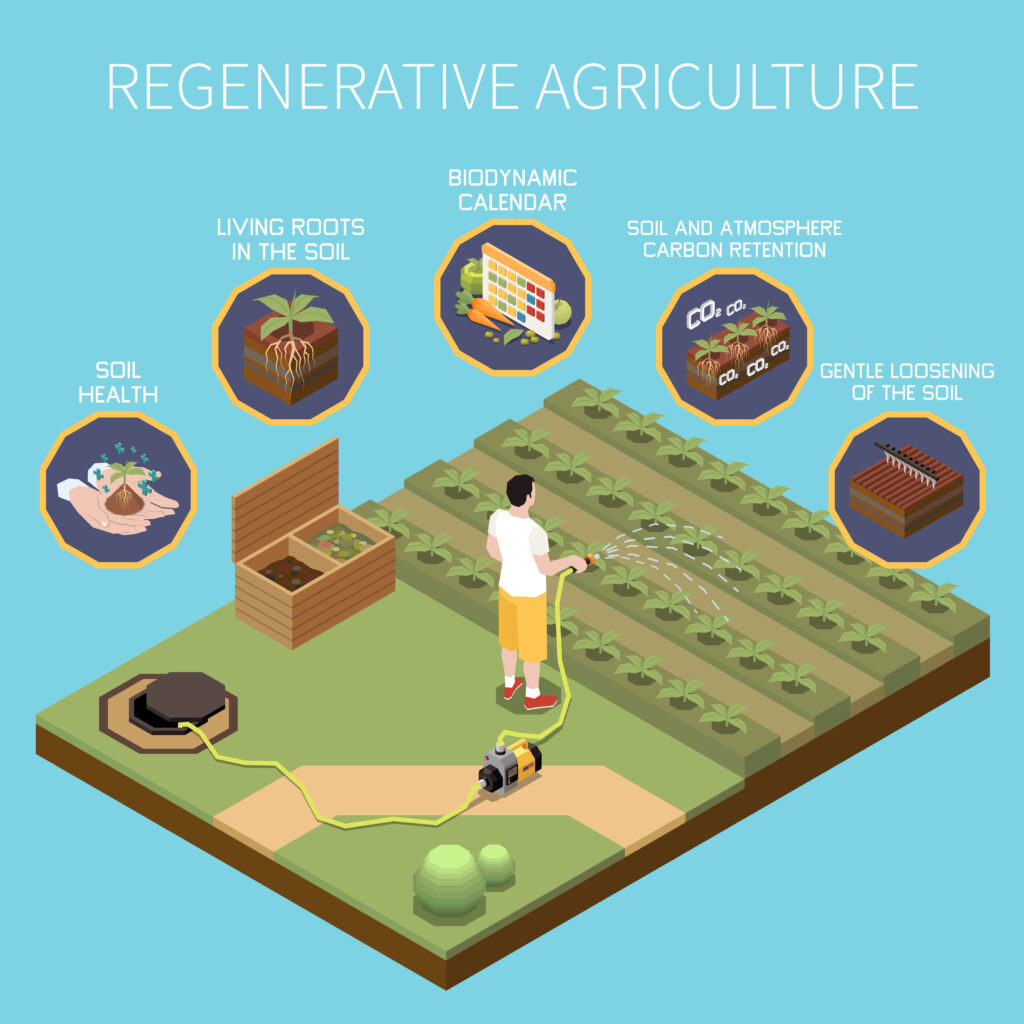Regenerative Agriculture: Can this farming method reverse climate change and feed the world?
The need for reliable, resilient, and sustainable agricultural production systems is increasing as the effects of climate change become more apparent, population growth accelerates, and hunger persists. The main contributor to the ruin of the environment is industrial agriculture, which powers our food system. However, a glimmer of hope appears in the form of regenerative agriculture. This emerging movement aims to feed the globe and counteract climate change in addition to healing the harm caused by traditional farming. Is this possible to be true? I think the complex dance of soil, biodiversity, and human inventiveness holds the key to the solution.
Fundamentally, regenerative agriculture promotes resilience and variety by imitating natural ecosystems. The chemical concoctions and monocultures that poison ecosystems and deplete soil are slowly being replaced by cover crops, which replenish the soil with organic matter by functioning as living groundcovers. By imitating the movements of herbivores, rotational grazing reduces erosion and fosters symbiotic connections between animals and plants. These seemingly easy procedures provide a cascade of advantages.

The capacity of regenerative agriculture to sequester carbon is one of its most powerful tools. One of the main causes of climate change is the massive amounts of greenhouse gases released by industrial agriculture. Conversely, regenerative methods operate as a powerful natural sink for carbon dioxide by removing it from the atmosphere and storing it in the soil. According to studies, implementing these practices on half of the world’s agricultural land could sequester up to 27 gigatons of carbon dioxide annually, which would account for a sizeable portion of the annual emissions (“Soil as a carbon reservoir: a critical comparison of biochar and compost” by Laird, D. A. et al. (2010) and “The Potential of Biochar for Carbon Sequestration in Regenerative Agriculture” by Lal, R. & and Kumar, D. (2014)).
Regenerative agriculture, however, aims to create a more robust food system as well as combat climate change. According to the Food and Agriculture Organization (2015), “Soil health and building a resilient food system” helps farms become more productive even in the face of harsh weather conditions by promoting healthy soil that is teeming with life and increasing crop yields and improving water retention. Furthermore, biodiversity reduces the demand for hazardous pesticides by acting as a buffer against illnesses and pests (“Biodiversity for a Sustainable Planet” by Secretariat of the Convention on Biological Diversity (2020)).
This is a reality that is taking place on farms all around the world, not just a utopian dream. In just 7 years, adopting regenerative techniques raised soil organic matter by 33% and maize yields by 28%, according to research from the US’s Rodale Institute (citation: “Regenerative Organic: Agriculture for a Better Future” by Rodale Institute (2018)). Fazenda Mata Grande in Brazil serves as an example of how combining cattle with crops can increase fertility, boost profitability, and repair degraded land (WWF, 2020, “Regenerative Agriculture in Practice: Lessons from Fazenda Mata Grande”).
But there are still difficulties. Making the switch to regenerative agriculture involves time, knowledge, and frequently financial investment. Industrial practices are frequently favored by current agriculture policy and subsidies, resulting in an unequal playing field. Furthermore, strong support networks—such as extension services, research, and a market architecture that recognizes the environmental advantages of regenerative produce—are necessary for widespread implementation. Regenerative agriculture has clear potential despite these obstacles. It provides a way forward for resilient communities, abundant harvests, and a better planet. It’s a call to action for consumers, legislators, scientists, and farmers alike to work together to restore the land and feed the coming generations.
Published on February 19, 2024.
Stay tuned for new blogs every Monday!
Follow the iMPACT Magazine on social media for more informative content.






